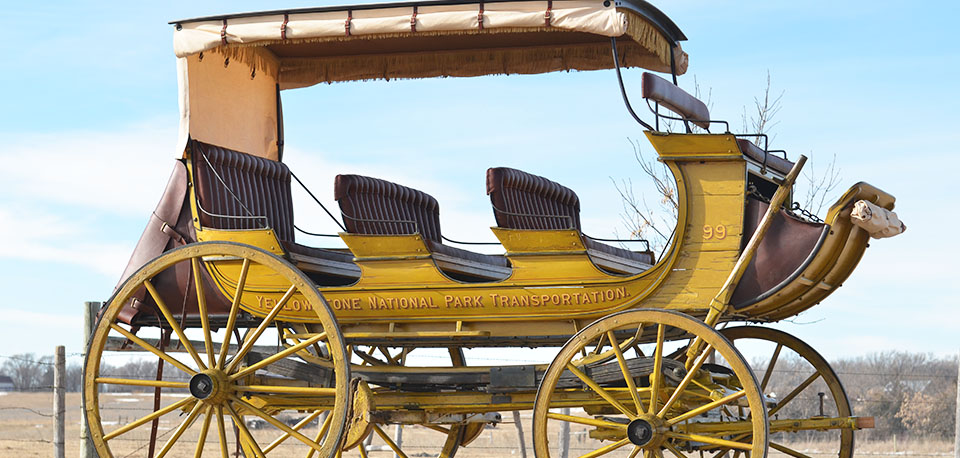Eastern Style Stagecoach Replication
The Concord Coach was the finest road vehicle of its time–a supreme achievement of American stage building. This Eastern Style Coach is identified by the wooden front boot and open rear luggage rack. Many of the Eastern Coaches carried the yellow straw color through from the body to the undercarriage as well.
Restored Henderson Stagecoach
Well-known throughout the West for quality built stages, express and thoroughbrace wagons, wagonettes, buckboards, carriages and other western vehicles, M.P. Henderson is a popular maker among enthusiasts still today.
Yellowstone Touring Coach Preservation
The Yellowstone Coach style was an open side sightseeing stagecoach used in National Parks to carry visitors and hotel guests on leisurely tours through the mountains. The open sides provided easy access and viewing, while the flat canopy top provided shade and some shelter from rain. These "observation" coaches and others like it were originally custom built by the Abbot-Downing Company for the YPT Co. specifically for touring Yellowstone National Park.
Historic John Deere Iron Clad Wagon
This beautiful John Deere Iron Clad Wagon is "ultra" rare and represents the era when the John Deere and Moline wagon companies were merging. This is one of the most extensive farm wagon restorations that Hansen Wheel and Wagon Shop has undertaken. Representing many hours of research and a meticulous restoration process.
Restored Albany Sleigh
This stunning Albany Sleigh with driver's seat was in good original condition when it came to Hansen Wheel & Wagon Shop. Because all of the original paint was still intact, we were able to restore this beautiful piece of history back to how it would have looked when it came out of the factory in the late 1800's.
Historic Wagon from Ventura California
This particular wagon is a heavy platform spring express wagon. It was a heavy haul delivery wagon that served the oil and water industries starting in the 1890’s in Ventura, California. Ventura Transfer was the dominant transportation company of that area, moving passengers and freight that originated with the ships in the new Ventura Harbor. With the building of Ventura’s wharf in 1872, coastal steamers put in and landed goods, and these wagons served as transportation delivering pipe and valves from the ships. This wagon travelled on the El Camino Real. The Ventura Transfer Company is still in business today.





